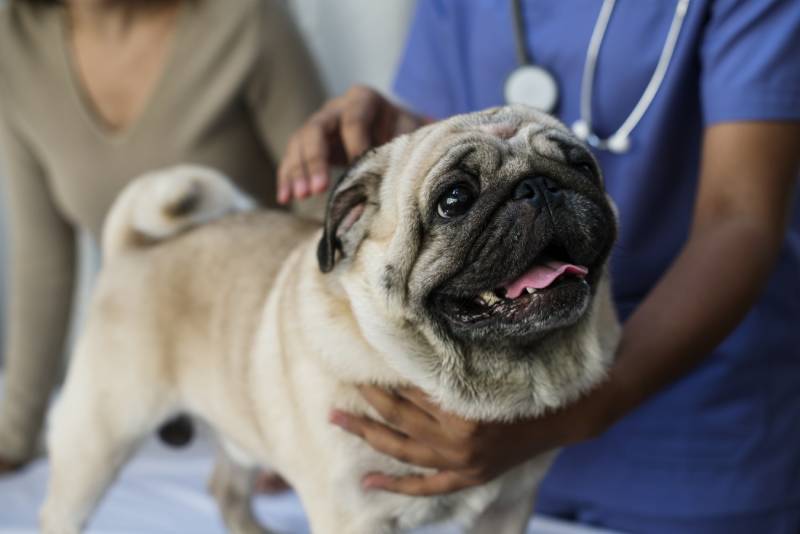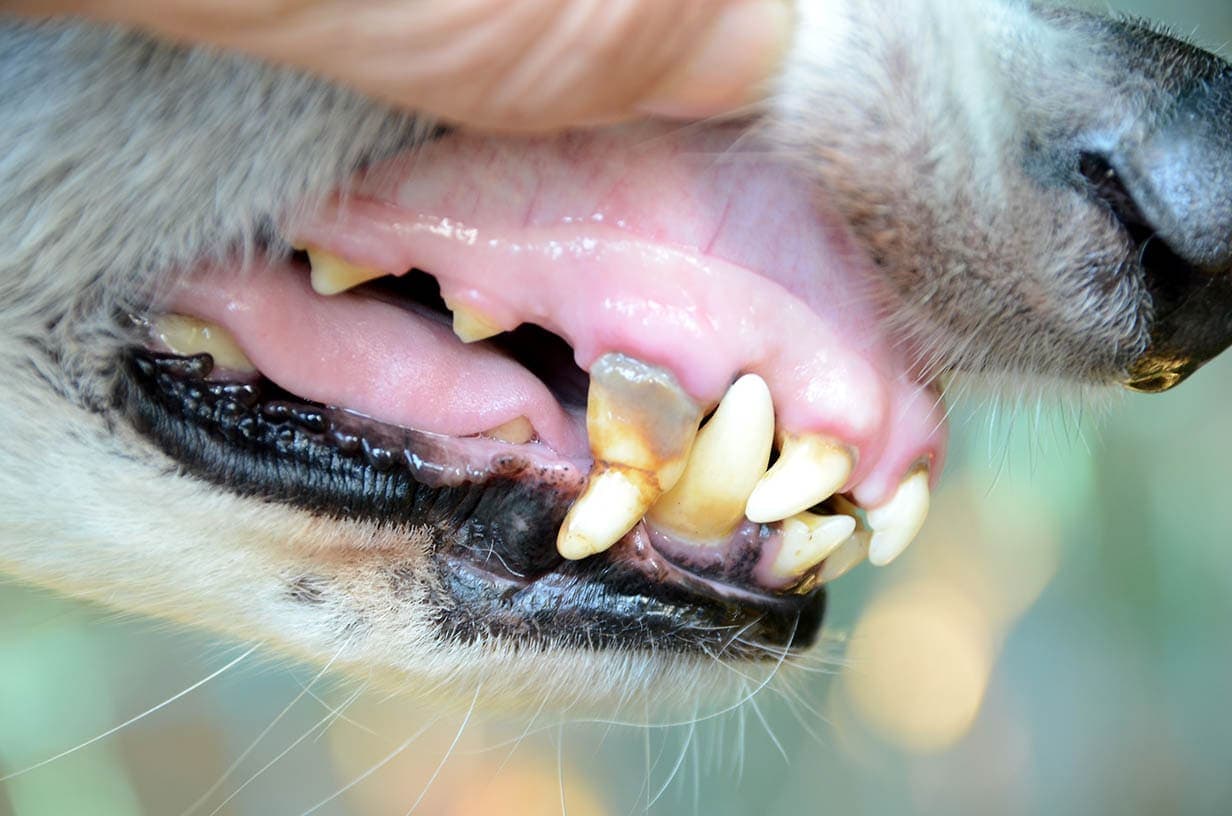Hormone Imbalance in Dogs: Signs, Causes & Treatment (Vet Answer)

Updated on

Click to Skip Ahead
Hormones are secreted by certain glands in your dog’s body. When the hormone levels are below or above the normal physiological limit, it can be said that your dog suffers from a hormonal disorder. These imbalances can cause numerous health problems for your four-legged friend.
Depending on the disorder, dogs can have skin problems (symmetrical hair loss, skin pigmentation, or thickening of the skin), nutritional problems (the dog eats more or less or drinks more water), or urinary problems (the dog urinates more often).
If such changes occur, it is recommended to take your dog to the veterinarian for a definite diagnosis and appropriate treatment. Most hormonal imbalances can be controlled with appropriate medication.
What Is Hormonal Imbalance?
Hormones play a vital role in maintaining the health of your dog’s body. Hormonal disorders represent fluctuations in the way that hormones work. More precisely, if there is too little or too much of a specific hormone in the blood, your dog will become ill.
Hormones are chemical substances secreted by certain glands in the body. The most important endocrine glands are the following:
- Pituitary
- Pineal
- Thymus
- Thyroid
- Adrenal
- Pancreas
- Ovary
- Testicle
The hormones secreted by the endocrine glands travel in the bloodstream to reach internal tissues or organs. They essentially tell the organs and tissues what to do and how to function. Hormones can influence many processes in the body, including:
- Homeostasis (constant internal balance)
- Growth and development
- Metabolism
- Sexual function
- Reproduction
- Heart rate
- Blood pressure
- Appetite
- Body temperature regulation
Small changes in hormone levels can lead to important changes in the entire body. Therefore, an increase or decrease in certain hormonal levels can be severe for your dog’s health.
There are laboratory tests that measure the hormonal levels in the blood. Your vet will analyze the results and establish the appropriate diagnosis and treatment. If a hormonal deficiency (imbalance) is detected, the vet can recommend synthetic hormone replacement therapy. In cases of excessive hormonal secretion, they can prescribe drugs that reduce the effects of the imbalanced hormone.

The 5 Signs of Hormonal Imbalance
The clinical signs of hormonal imbalances in pets are related to the hormonal system being disturbed. That said, the most common signs that owners notice are:
- Frequent urination and increased thirst
- Hair loss and the appearance of pigment spots on the skin
- Weight gain or loss
- Panting
- Lethargy
The 4 Causes of Hormonal Imbalance
The causes of hormonal disorders are multiple and include a deficient production of hormones. The most common hormonal problems diagnosed in dogs are:
- Cushing’s disease (hyperadrenocorticism)
- Addison’s disease
- Diabetes
- Hypothyroidism
1. Cushing’s Disease
Cushing’s disease, or hyperadrenocorticism, consists of an increased concentration of cortisol in the blood and is one of the most common hormonal imbalances in dogs. Cortisol is produced by the adrenal glands (located near the kidneys) and has multiple roles:
- Blood pressure regulator
- Electrolyte balance regulator
- Metabolism regulator
- Immune system regulator
Dogs suffering from Cushing’s disease may show the following clinical signs:
- Increased thirst
- Frequent urination
- Skin irritations
- Hair loss
- Thinning of the skin
- Swollen abdomen
- Obesity
- Lack of energy
- Increased appetite
- Weight gain
- Infertility
- Muscle wasting
- Depression
Dogs with Cushing’s disease are at risk for developing secondary skin or urinary infections and hypertension (high blood pressure).

2. Addison’s Disease
Addison’s disease, or hypoadrenocorticism, is a deficiency of the adrenal gland. The most common cause in dogs is primary adrenal insufficiency, which usually leads to glucocorticoid (cortisol) and mineralocorticoid (aldosterone) deficiency. There are rare cases in which hypoadrenocorticism is caused by pituitary gland dysfunction, resulting in decreased or absent corticotropin secretion (adrenocorticotropic hormones) and secondary adrenal insufficiency.
Clinical signs are mostly absent and non-specific. However, in Addison’s disease, the following can occur:
- Increased thirst
- Frequent urination
- Loss of appetite
- Dehydration
- Vomiting
- Diarrhea
- Lethargy
- Weight loss
- Weakness
- Trembling
3. Diabetes
In diabetes, the pancreas of affected dogs produces little or no insulin. Insulin is a hormone that regulates the metabolism of carbs. When this hormone is missing or produced in insufficient quantities, the amount of sugar in the blood is no longer properly regulated, and the affected dogs will show a series of clinical signs, including:
- Increased thirst
- Frequent urination
- A great desire for food or decreased appetite
- Weight gain
If your dog’s diabetes is left untreated, hypo- or hyperglycemic coma can occur, which can lead to your pet’s death.

4. Hypothyroidism
Hypothyroidism is a metabolic disease that occurs when the body no longer produces enough T3 and T4 thyroid hormones. The main causes of insufficient production of thyroid hormones are represented by defects and structural abnormalities of the thyroid gland.
Clinical signs of hypothyroidism in dogs include:
- Decreased sensory abilities
- Lethargy
- Swelling of the face
- Decreased libido in males
- Altered appetite
- Cardiovascular changes
- Neurological disorders, such as facial nerve palsy
- Weight gain
- Cold intolerance
- Hair loss on the sides of the body and tail
- Hyperpigmentation
- Delay in healing
How Do I Care for a Dog With Hormonal Imbalance?
Even though most hormonal imbalances can be kept under control, success is based on obtaining a precise diagnosis and the careful supervision of your dog. Therefore, take your dog to the vet as soon as the first clinical signs of a hormonal imbalance occur. The vet will perform or order specific tests that will confirm or infirm an endocrine disease.
Once an endocrine disorder is diagnosed, strictly follow your vet’s advice to keep your dog’s disease under control.

Frequently Asked Questions (FAQs)
How Do You Fix Hormonal Imbalance in Dogs?
Hormonal imbalances are often successfully treated or kept under control by supplementing the body with synthetic hormones. For example, dogs with diabetes will be given insulin shots, while those suffering from thyroid hormonal imbalances will take synthetic hormones orally (e.g., levothyroxine).
At What Age Do Dogs Get Hormonal?
Puberty in dogs (the beginning of sexual maturity) is reached at the age of 7–12 months. At this age, dogs begin to show behavioral and physical changes (such as urinating in the house or aggression). In intact females, excess estrogen hormones can lead to mammary cancer, pseudopregnancy, or pyometra. In males, excess testosterone can lead to behavioral problems and testicular cancer. For these reasons, it is recommended to sterilize your pet.
Conclusion
Hormonal imbalances in dogs occur due to the insufficient secretion of hormones. The endocrine glands can secrete more or fewer hormones than normal. Affected dogs will show various clinical signs, such as symmetrical hair loss, intense thirst, frequent urination, skin pigmentation, and/or fattening. If your dog shows these signs, a visit to the vet is necessary. The most common endocrine disorders in dogs are diabetes, hypothyroidism, Cushing’s disease, and Addison’s disease.
Featured Image Credit: atiger, Shutterstock














